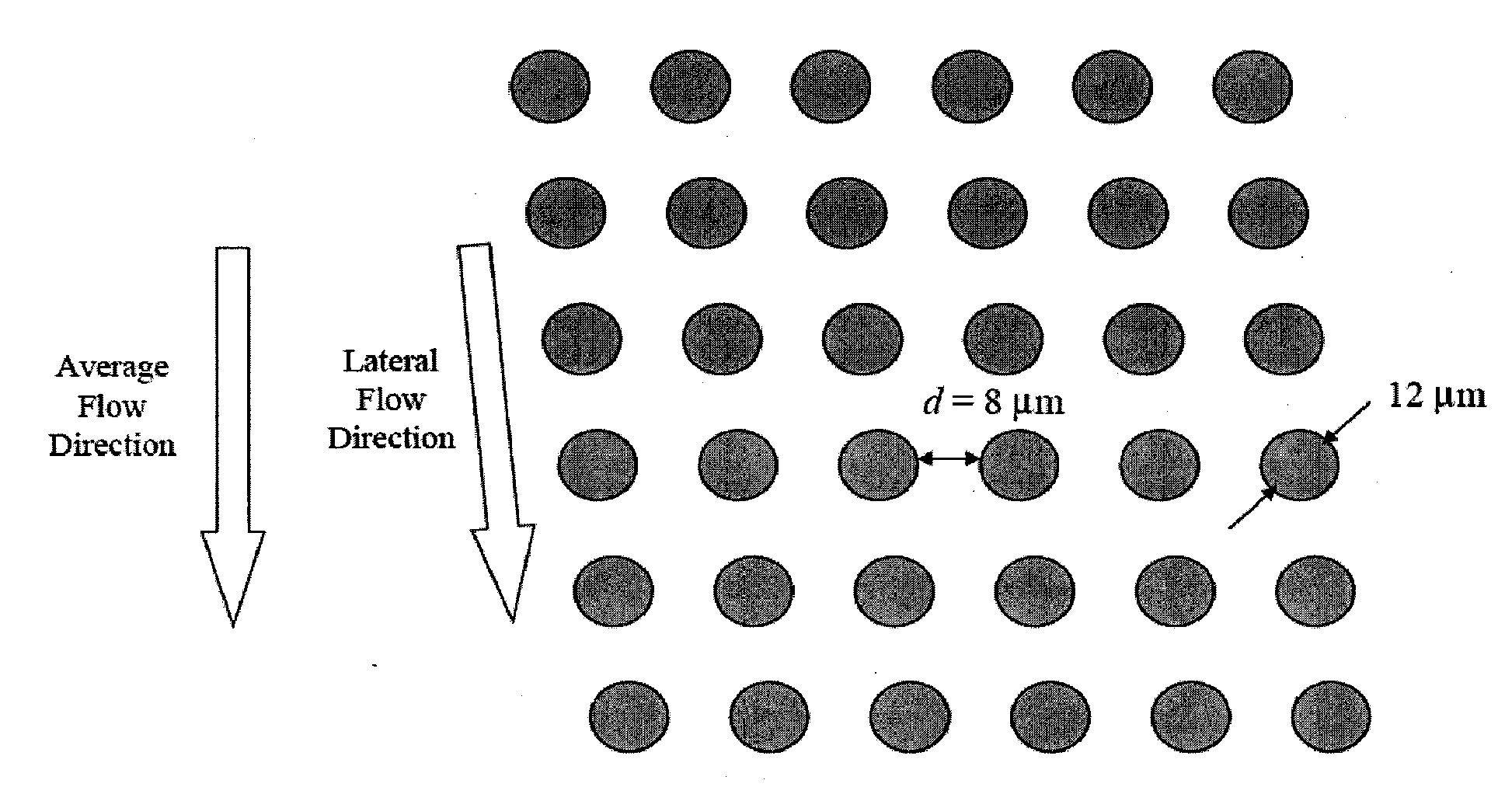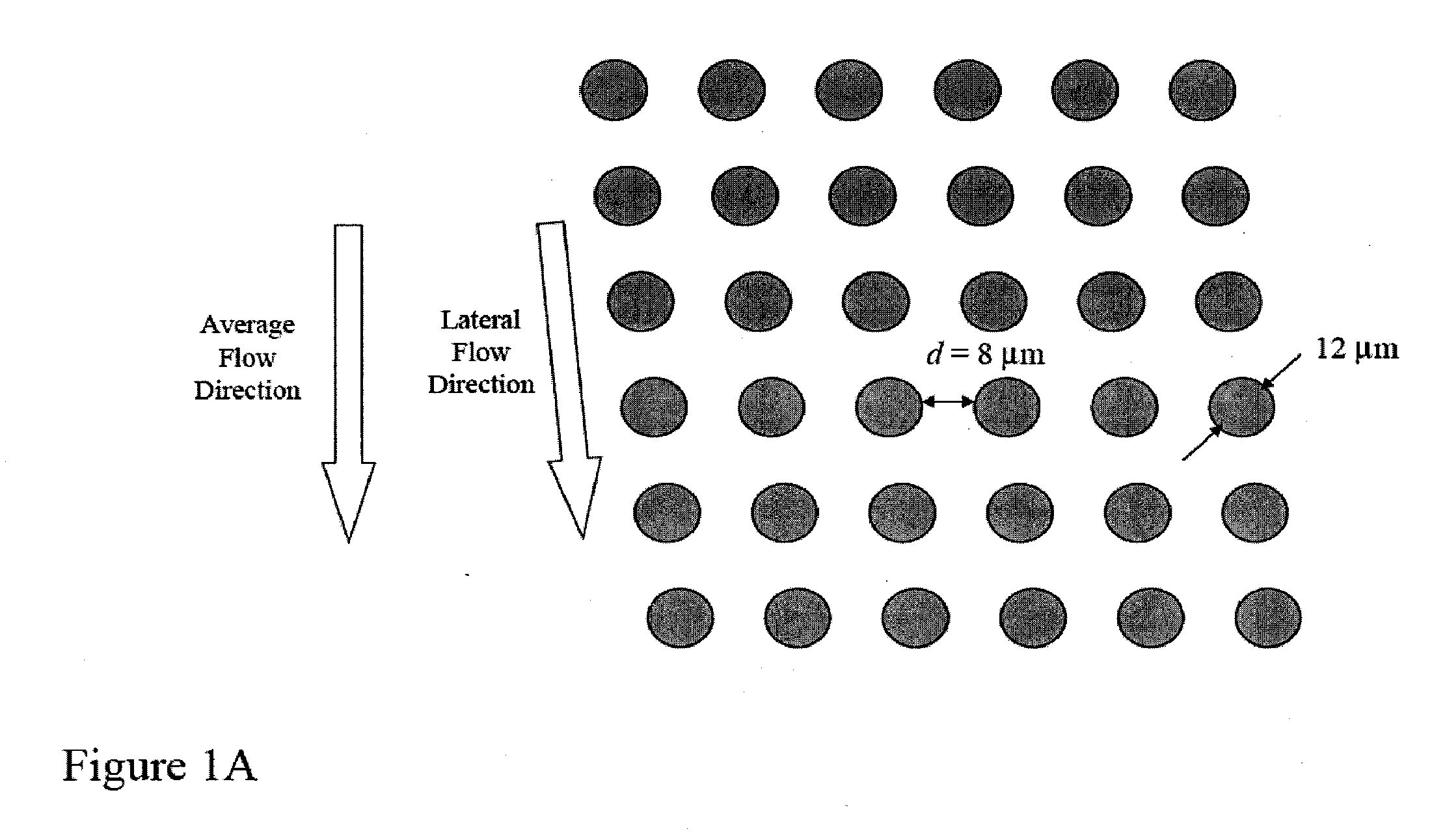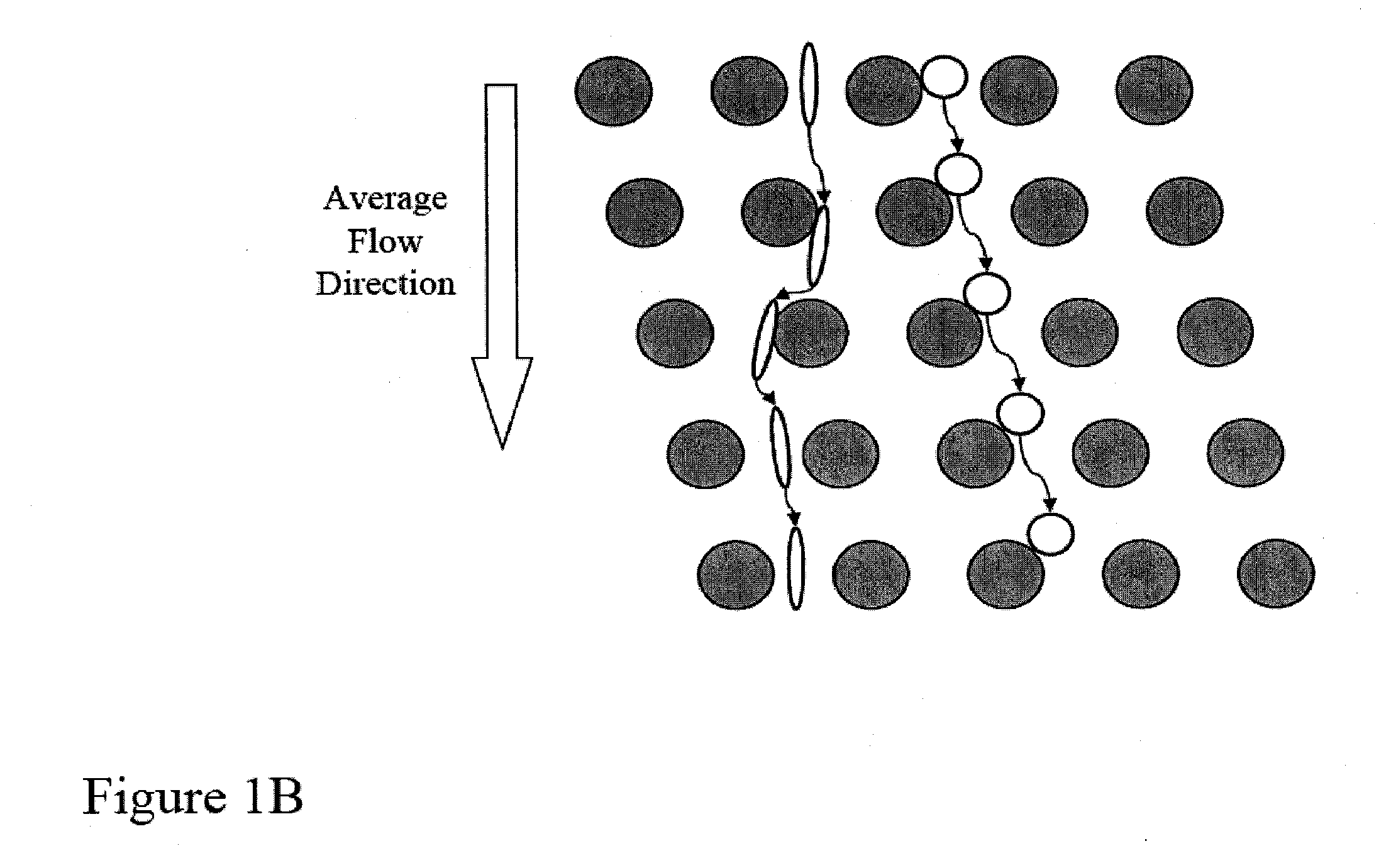Rare cell analysis using sample splitting and DNA tags
a sample and dna technology, applied in the field of rare cell analysis using sample splitting and dna tags, can solve the problems of amniocentesis and chorionic villus sampling (cvs), is potentially harmful to the mother and the fetus, time-consuming analysis, and is prone to errors
- Summary
- Abstract
- Description
- Claims
- Application Information
AI Technical Summary
Benefits of technology
Problems solved by technology
Method used
Image
Examples
example 1
Separation of Fetal Cord Blood
[0206]FIG. 1E shows a schematic of the device used to separate nucleated cells from fetal cord blood.
[0207] Dimensions: 100 mm×28 mm×1 mm
[0208] Array design: 3 stages, gap size=18, 12 and 8 μm for the first, second and third stage, respectively.
[0209] Device fabrication: The arrays and channels were fabricated in silicon using standard photolithography and deep silicon reactive etching techniques. The etch depth is 140 μm. Through holes for fluid access are made using KOH wet etching. The silicon substrate was sealed on the etched face to form enclosed fluidic channels using a blood compatible pressure sensitive adhesive (9795, 3M, St Paul, Minn.).
[0210] Device packaging: The device was mechanically mated to a plastic manifold with external fluidic reservoirs to deliver blood and buffer to the device and extract the generated fractions.
[0211] Device operation: An external pressure source was used to apply a pressure of 2.0 PSI to the buffer and bl...
example 2
Isolation of Fetal Cells from Maternal Blood
[0215] The device and process described in detail in Example 1 were used in combination with immunomagnetic affinity enrichment techniques to demonstrate the feasibility of isolating fetal cells from maternal blood.
[0216] Experimental conditions: blood from consenting maternal donors carrying male fetuses was collected into K2EDTA vacutainers (366643, Becton Dickinson, Franklin Lakes, N.J.) immediately following elective termination of pregnancy. The undiluted blood was processed using the device described in Example 1 at room temperature and within 9 hrs of draw. Nucleated cells from the blood were separated from enucleated cells (red blood cells and platelets), and plasma delivered into a buffer stream of calcium and magnesium-free Dulbecco's Phosphate Buffered Saline (14190-144, Invitrogen, Carlsbad, Calif.) containing 1% Bovine Serum Albumin (BSA) (A8412-100ML, Sigma-Aldrich, St Louis, Mo.). Subsequently, the nucleated cell fraction ...
example 3
Quantitative Genotyping Using Molecular Inversion Probes for Trisomy Diagnosis on Fetal Cells
[0219] Fetal cells or nuclei can be isolated as described in the enrichment section or as described in example 1 and example 2. Quantitative genotyping can then be used to detect chromosome copy number changes. FIG. 5 depicts a flow chart depicting the major steps involved in detecting chromosome copy number changes using the methods described herein. For example, the enrichment process described in example 1 may generate a final mixture containing approximately 500 maternal white blood cells (WBCs), approximately 100 [maternal nuclear red blood cells] (mnBCs), and a minimum of approximately 10 fetal nucleated red blood cells (fnRBCs) starting from an initial 20 ml blood sample taken late in the first trimester. The output of the enrichment procedure would be divided into separate wells of a microtiter plate with the number of wells chosen so no more than one cell or genome copy is located ...
PUM
| Property | Measurement | Unit |
|---|---|---|
| Fraction | aaaaa | aaaaa |
| Mass | aaaaa | aaaaa |
| Mass | aaaaa | aaaaa |
Abstract
Description
Claims
Application Information
 Login to View More
Login to View More - R&D
- Intellectual Property
- Life Sciences
- Materials
- Tech Scout
- Unparalleled Data Quality
- Higher Quality Content
- 60% Fewer Hallucinations
Browse by: Latest US Patents, China's latest patents, Technical Efficacy Thesaurus, Application Domain, Technology Topic, Popular Technical Reports.
© 2025 PatSnap. All rights reserved.Legal|Privacy policy|Modern Slavery Act Transparency Statement|Sitemap|About US| Contact US: help@patsnap.com



